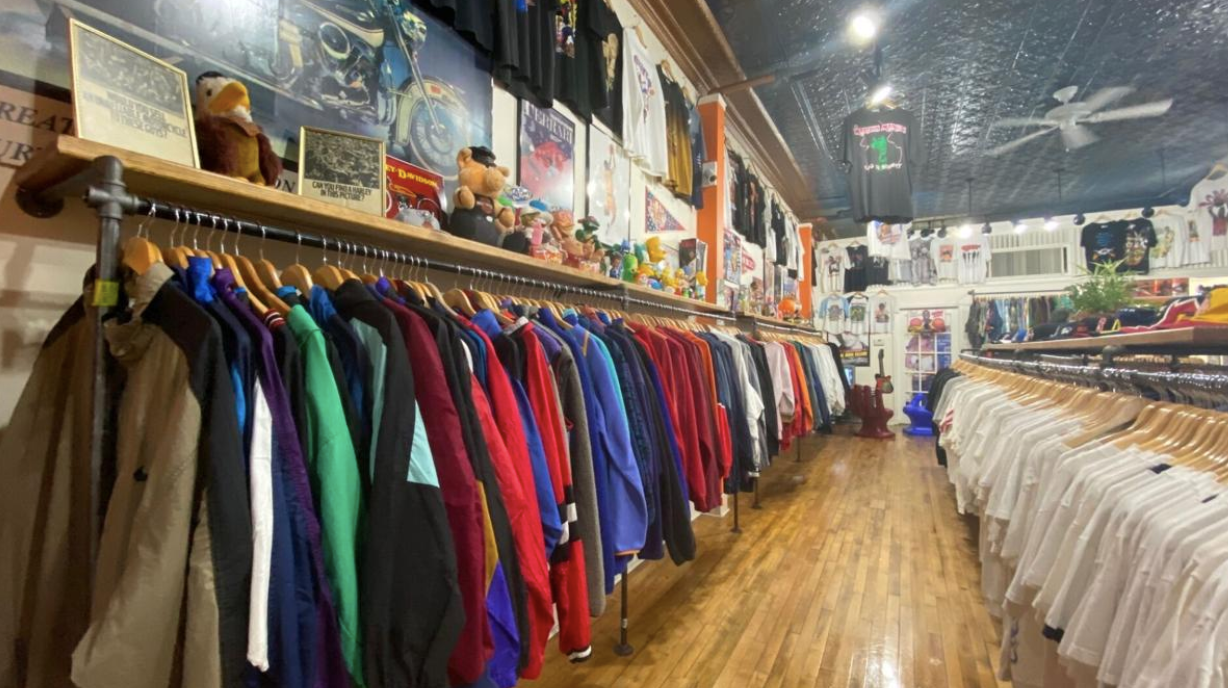Your Wardrobe’s Hidden Price: Confrontation Oversaturation in Fashion
Written by Roan Vaughn
Back-to-school shopping was always an exciting time for me while growing up. Raised in New York City, I spent my summers on the North Fork Peninsula of Long Island. As my mom, sister, and I drove back into the city a week before classes began, we made a tradition of stopping at an outdoor mall to restock our fall and winter wardrobes. This annual event was something I looked forward to for the entire summer. However, in the depths of winter, when it was time to clean out my wardrobe I'd realize how many unworn clothes I had accumulated. This ultimately led to frequent closet clean-outs that forced me to discard clothes I hadn't worn enough before replacing them with new ones. As I grew older, like many others, it was clear that what was once a small inconvenience for me was the beginning of a problem that became increasingly challenging to address as I developed my personal style.
When scrolling through Instagram or TikTok, or simply taking a stroll down State Street, it’s hard to miss the overwhelming number of advertisements and products readily available to you at any given moment. Furthermore, with seemingly every brand is coming out collections that follow seasonal trends and your favorite influencers telling you about how great an item is, it's easy to grow your closet more than it can handle.
The problem arises when you realize you simply don't have enough time to wear everything you own. As a matter of fact, in the last 15 years the average number of wears for an item has decreased by over a third, with some clothes only being worn around 7 times (Igini). While having a diverse wardrobe can be important, being able to work with essential pieces to make unique outfits is just as key to your style. A vital part of the clothing you own is the connection to the items you center your wardrobe around, and regularly replacing your entire closet can limit that personal tie.
Not only is this oversaturation of the fashion industry weakening our sense of personal style, but it’s also killing the planet. Recent research has shown 92 million tonnes of textile waste are produced every year, and the average American consumer throws out 81.5 lbs of clothing on an annual basis(Igini). In fact, the fashion industry accounts for a tenth of the world’s carbon emissions (Demesa).
However, there's an obvious solution to this problem that’s avoided by many and sought after by few: second-hand clothing. Thrift stores are growing in popularity all over the world, from New York to Madrid. Even in Madison stores like Singlestitch Madison, a curated vintage store on State Street, draw thousands of students. Singlestitch (@singlestitch_madison), combines top-tier curation and customer service with secondhand clothing, providing an aesthetic that is growing more popular than ever. With trend in secondhand clothing, there has never been a better time to donate or sell unwanted clothes to a thrift store near you. There are also rapidly growing apps and online stores such as Depop, which uses personal preferences and an accessible user interface to expose users to new trends and create an easy way to make money while helping make sure your clothes can fit in someone else’s wardrobe even when they may not necessarily work in yours.
When it comes time to get rid of clothes you had a change of heart about or never got the chance to wear, consider selling or donating before tossing them. You’ll be able to give them another life in someone else’s closet, while helping your planet out in the process.
References:
Demesa, Angela. “How Thrift Shopping Is Being Kind To The Earth | Swift Wellness.” Swift, 18 Apr. 2022, https://www.swiftfit.net/blog/sustainable-thrift-shopping.
Depop - buy, sell, discover unique fashion. https://www.depop.com. Accessed 19 Oct. 2023.
Igini, Martina. “10 Concerning Fast Fashion Waste Statistics.” Earth.Org, 21 Aug. 2023, https://earth.org/statistics-about-fast-fashion-waste/.
Singlestitch Madison. https://www.instagram.com/accounts/login/?next=https%3A%2F%2Fwww.instagram.com%2Fsinglestitch_madison%2F%3Fhl%3Den. Accessed 19 Oct. 2023.
Lorenz, Jo. “Decolonising Fashion: How An Influx Of ‘Dead White Man’s Clothes’ Is Affecting Ghana.” Eco-Age, 4 Aug. 2020, https://eco-age.com/resources/decolonising-fashion-dead-white-mans-clothes-ghana/.
Vinick, Gaby. “Out with the New, in with the Old: Vintage Streetwear Store Singlestitch Opens on State Street.” Channel3000.Com, 12 Sept. 2021, https://www.channel3000.com/madison-magazine/arts-and-culture/out-with-the-new-in-with-the-old-vintage-streetwear-store-singlestitch-opens-on-state/article_f2eb94dd-daf3-5be5-b833-86041e37c9b4.html.
Edited by: Lauren Veum, Nicole Borras, Brett Byers, Alex Speier, Caitlin Robaczewski, Helen Song
DEI Reviewed by: Katherine Rubinstein


